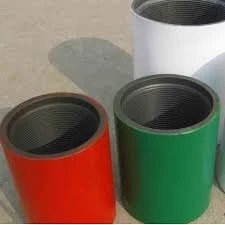- Afrikaans
- Albanian
- Amharic
- Arabic
- Armenian
- Azerbaijani
- Basque
- Belarusian
- Bengali
- Bosnian
- Bulgarian
- Catalan
- Cebuano
- Corsican
- Croatian
- Czech
- Danish
- Dutch
- English
- Esperanto
- Estonian
- Finnish
- French
- Frisian
- Galician
- Georgian
- German
- Greek
- Gujarati
- Haitian Creole
- hausa
- hawaiian
- Hebrew
- Hindi
- Miao
- Hungarian
- Icelandic
- igbo
- Indonesian
- irish
- Italian
- Japanese
- Javanese
- Kannada
- kazakh
- Khmer
- Rwandese
- Korean
- Kurdish
- Kyrgyz
- Lao
- Latin
- Latvian
- Lithuanian
- Luxembourgish
- Macedonian
- Malgashi
- Malay
- Malayalam
- Maltese
- Maori
- Marathi
- Mongolian
- Myanmar
- Nepali
- Norwegian
- Norwegian
- Occitan
- Pashto
- Persian
- Polish
- Portuguese
- Punjabi
- Romanian
- Russian
- Samoan
- Scottish Gaelic
- Serbian
- Sesotho
- Shona
- Sindhi
- Sinhala
- Slovak
- Slovenian
- Somali
- Spanish
- Sundanese
- Swahili
- Swedish
- Tagalog
- Tajik
- Tamil
- Tatar
- Telugu
- Thai
- Turkish
- Turkmen
- Ukrainian
- Urdu
- Uighur
- Uzbek
- Vietnamese
- Welsh
- Bantu
- Yiddish
- Yoruba
- Zulu
bull plug pressure rating
Understanding Bull Plug Pressure Ratings A Comprehensive Overview
In various industrial applications, particularly in the field of oil and gas, adequately managing pressure is crucial for safety and efficiency. One essential component that plays a pivotal role in pressure management is the bull plug. Bull plugs, designed to seal and close off ports and openings in pipelines and equipment, are subjected to different pressure ratings that reflect their strength and reliability under operational conditions. In this article, we will explore the significance of bull plug pressure ratings, their classifications, and the factors influencing these ratings.
What is a Bull Plug?
A bull plug is a type of fitting used in plumbing and piping systems to seal the end of a pipe or a valve, preventing media from escaping. Made from various materials, including metal, plastic, or rubber, these plugs ensure that the internal pressure of a system is maintained. Proper sealing is not only essential for operational efficiency but also critical for safety, especially in high-pressure environments.
Pressure Ratings Explained
Pressure ratings refer to the maximum pressure that a fitting, including bull plugs, can handle without failing. These ratings are vital in ensuring that the equipment can operate safely within specified limits. The pressure rating is often indicated in psi (pounds per square inch) or bar and is determined based on the material properties, dimensions, and design of the plug.
1. Material Considerations The material of the bull plug significantly impacts its pressure rating. For example, a metal bull plug may have a higher pressure rating compared to a plastic one due to its superior strength and durability at high temperatures. Common materials for bull plugs include carbon steel, stainless steel, and various grades of plastic, each with distinct performance characteristics.
bull plug pressure rating

2. Rating Standards Several standardized rating systems provide guidelines on the pressure capacity of bull plugs. The American Society of Mechanical Engineers (ASME) and the American National Standards Institute (ANSI) are two of the most widely recognized organizations that establish and publish these standards. Following these guidelines helps manufacturers produce reliable products that meet safety requirements.
3. Temperature Influence The operating temperature also influences the pressure rating of bull plugs. High temperatures can weaken certain materials, leading to potential failure. Therefore, it is essential to consider both pressure and temperature when selecting a bull plug for high-pressure applications. Manufacturers usually provide data sheets that specify the temperature range in which the bull plug can operate safely.
Importance of Proper Selection
Selecting the right bull plug for a specific application involves understanding its pressure rating and ensuring it aligns with the operational requirements. Using a plug with an insufficient pressure rating can lead to catastrophic failures, including leaks or explosions. Conversely, over-specifying a pressure rating can lead to increased costs without any tangible benefits.
Industries must conduct regular maintenance checks and inspections to ensure the integrity of bull plugs and the overall pipeline system. In cases where a bull plug shows signs of wear or damage, immediate replacement is necessary to uphold safety standards.
Conclusion
Bull plug pressure ratings are a critical factor in ensuring the safety and reliability of industrial systems, especially in high-pressure environments. Understanding the materials, standards, and factors influencing these ratings is essential for selecting the appropriate fitting for specific applications. By prioritizing proper installation, regular inspection, and maintenance, industries can effectively manage pressure and enhance overall operational efficiency. As technology and materials advance, the future of bull plugs will continue to evolve, promising even greater safety and reliability in the years to come.
-
Well Casing Extension Couplings – Applications and InstallationNewsJun.06,2025
-
Types of Crossover Subs in Drilling & CompletionNewsJun.06,2025
-
Key Features of High-Quality Tubing Pup JointsNewsJun.06,2025
-
Installation and Maintenance Tips for Steel Couplings for PipeNewsJun.06,2025
-
How to Select the Right Pup Joint for Oil & Gas OperationsNewsJun.06,2025
-
Applications of Stainless Steel Pipe CouplingsNewsJun.06,2025







